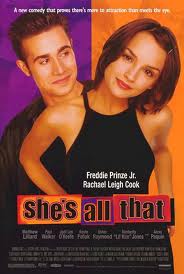
Fellow editor, Lipiquini, has explored the effects of fashion advertisement on women’s self esteem. The claim is that the fashion industry benefits financially by convincing women of their rampant and offensive deficiencies. A woman with low self esteem is a walking target for every item under the sun that can rid her of her awfulness. Advertisements are the vehicles bringing these products to the female masses. They’re coming fast, hard, and continuous.
I’ve always thought I was a bit immune to advertisements. Not because I am somehow wiser or stronger, but because the advertisements weren’t targeted at me. And because they were not for me, I felt less influenced by them. The opposite happened in fact, where I just found myself becoming infuriated. Infuriated that I was not privileged to be a part of the targeted audience; somehow, I was considered less than and an outsider.
If consumers (predominantly women) are being bombarded with messages that their bodies, hair, clothing, or scent is not good enough, then what are we saying to the women who aren’t even good enough to appear in the commercials as needing help? So, even their best is not good enough to be considered a successful candidate to mold into some new ideal woman.
We ignore it effortlessly, but the “before” woman in all of these advertisements is always very much the average woman. I’ve always wanted to create a new sociological theory, so now, we will explore the She’s All That Effect. In the 1999 film, a popular student is dared to turn the most homely girl in school into the prom queen. Moviegoers, women of all ages, ate this premise up. With a new dress, contacts instead of glasses, and a few strokes of a MAC brush, the ugly duckling was transformed into every man (and low self esteemed) woman’s dream. But, let’s pull the Freddie Prinze Jr wool from over our eyes and really examine what happened. Was our leading lady really that far gone? In short, not really. She was white, large breasted, thin, straight haired, and doe eyed whose worst fashion mishap was the paint smeared overalls she wore. The point is, the audeicne (me included) had a warped since of what bad really was. The challenge was not to turn an overweight, bald, disabled bodied, awkward, transgendered minority into the prom queen. The “challenge” was to turn the average looking girl into something spectacular. The problem isn’t that we want to be spectacular or that we allow advertisers to tell us what spectacular is. The problem is that we don’t even realize that they’ve changed what it means to be average.
When I don’t see any representations of myself as even that average woman, it seems impossible to be fazed by the “after” woman or the ideal. I don’t find myself agonizing over the size 2 woman, because I’m still trying to be the size 16 woman and she doesn’t even make an appearance in these commercials. Yes, I absolutely see that advertisements create and profligate ideas of worthlessness in women that can only be remedied with the purchase of things, but for a moment, can we stop to think that the deception is already so far ingrained that even the hidden messages of advertisements have hidden messages. Fashion advertising is designed to show us what is desirable, but the most dangerous impact of these advertisements may be that they also reveal what the status quo is.
If you aren’t the model or the status quo, then where do you belong? How do you get fixed?
Can you be fixed?

Leave a Reply
You must be logged in to post a comment.